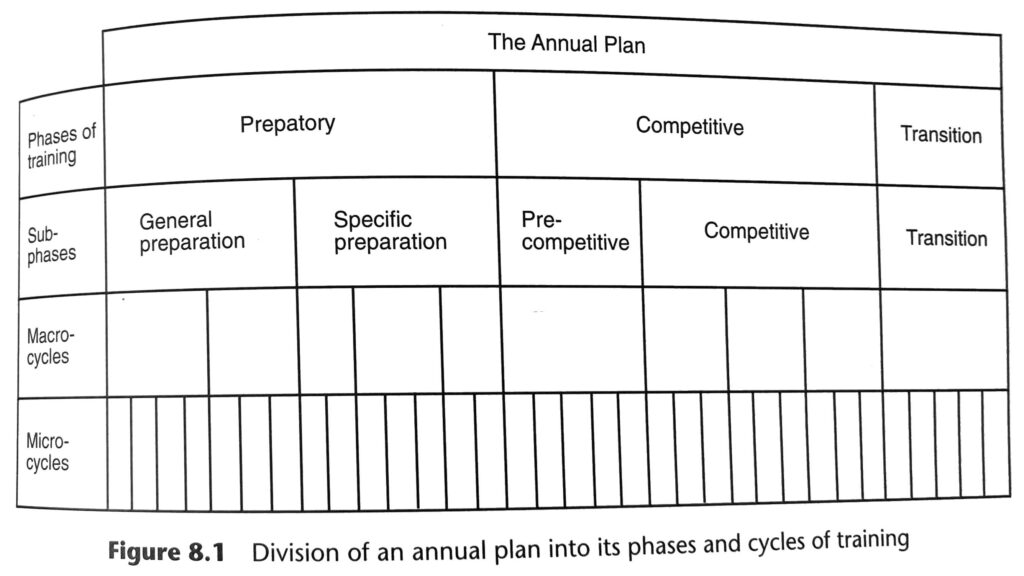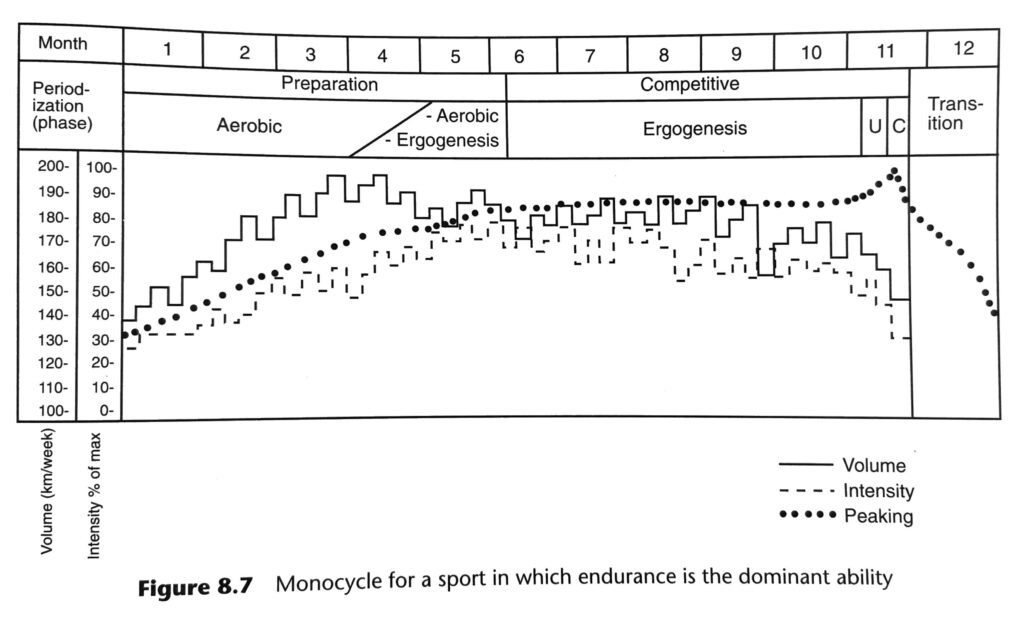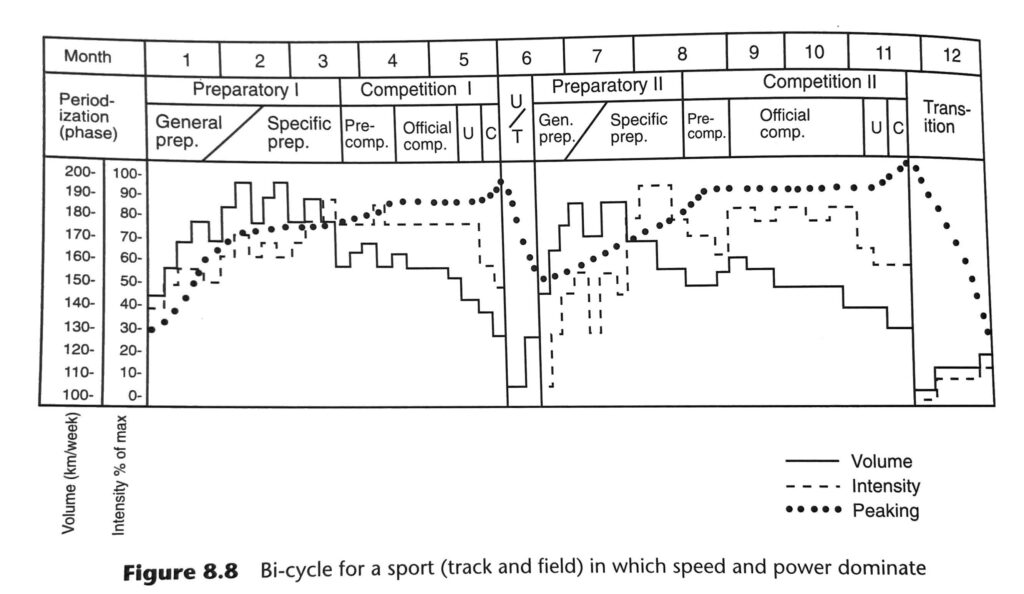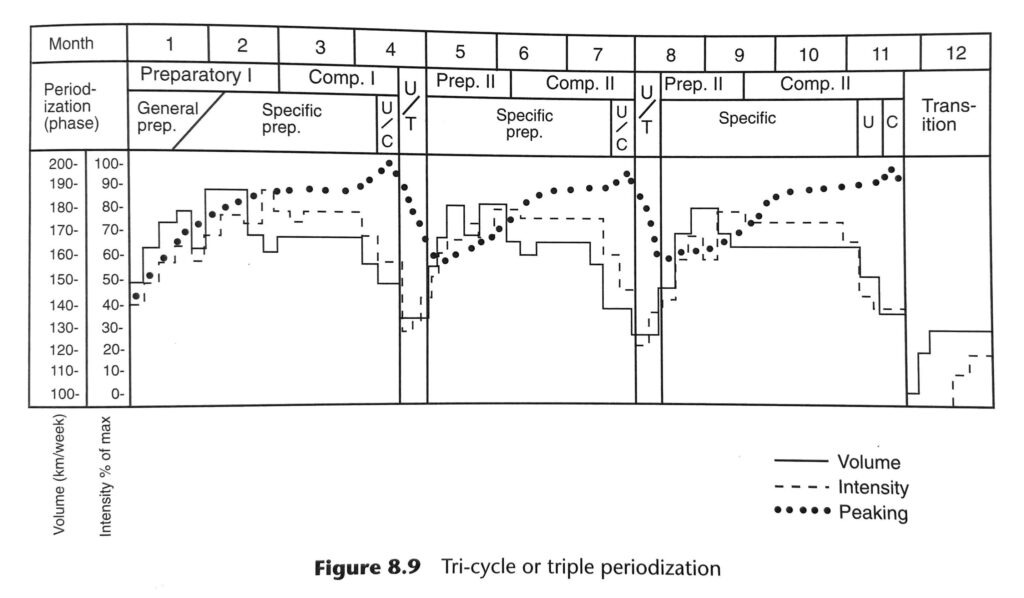Professor Tudor Bompa is often referred to as the father of periodisation but I personally disagree as Bompa took the concepts of Hans Selye’s General Adaptation Syndrome (GAS) and Leo Matveyev from the 1950’s and 60’s further developing them. Bompa is an academic who wrote prolifically on the subject both theoretically in peer reviewed journals as well as writing books on the Theory and Methodology of Periodisation, and further still on practical application in a range of different sports. Guru or God Father is a more fitting title for the single person who took the theoretical knowledge out of Eastern Block Europe and brought this knowledge to both the Western World and general sports people across a range of sports. The sixth edition of his very popular book Periodization: Theory and Methodology of Training is about to be released in a couple of weeks.
This is the next instalment in my series about Periodisation (English spelling with an ‘s’, American spelling is traditionally with a ‘z’) and the methodologies from coaches that guided my early philosophies around periodisation of training seasons and event build ups. Have a read of last weeks article about Frank Dick and what he recommends his book Sports Training Principles:
Bompa describes the Annual Training Plan as being necessary to maximise performance and is divided into training phases. This help achieve the objective of training, which is to achieve a high level of performance at a given time. Bompa developed many aspects of periodisation, the focus of this article will be on the most relevant for endurance athletes, but the key principles apply across the spectrum into strength, bodybuilding, etc….
The training period managed by the Annual Training Plan is divided into three phases: Prepatory, Competitive and Transition. Both the Prepatory and Competitive phases are further sub-divided into sub-phases (which will be covered in more detail below). These sub-phases can be further broken down into Macro-cycles, and each macrocycle can be further broken down into Micro-cycles

Mono-Cycle
The different training phases allow athletes to progressively develop over a long period. In seasonal sports with one major competition or competitive phase during the year will use a monocycle. This plan is broken into preparatory, competitive and transition phases. There are the general and specific sub-phases within the preparatory phase. The competitive phase is also divided into sub-phases of pre-competition (which includes low-key events) and then the main competitions sub-phase.

During the preparatory and early competitive phases, the emphasise of training should be on building volume with low-intensity. Quality of work should be emphasised, as opposed to the competitive phase the emphasis should be intensity or quality of work.
As the athlete moves closer and closer to the competitive phase of training the volume decreases and intensity increases.
Bi-Cycle
A different approach is required for sports with two separate seasons. The following example incorporates the following training phases:
- longer Preparatory Phase I;
- Competitive Phase I;
- short Transition (1-2 weeks) that then merges into Preparatory Phase II;
- Competitive Phase II; and
- Transition Phase.

A Bi-Cycle is effectively two shorter Mono-Cycles that are linked by a short Unload and Transition (U/T) Phase.
In the first Preparatory Phase the training volume is of a higher magnitude than in Preparatory Phase II. Everything is building towards the higher peak in Competitive Phase II. Bompa also talks about a great emphasis on aerobic conditioning and a higher total volume for endurance athletes to ensure the dominant energy system (aerobic) is trained appropriately.
Tri-Cycle
A triathlete or runner may use a Tri-Cycle periodised plan in preparation for a major event. For example preparing for an Ironman the first build up to a marathon in the fall, then an Ironman 70.3 in the spring and then a full Ironman in summer. In a similar fashion a marathoner may build up to a half marathon first, then a low-key marathon before targeting their major marathon goal for the season with a third cycle.
A different approach is required for sports with two separate seasons. The following example incorporates the following training phases:
- longer Preparatory Phase I;
- Competitive Phase I;
- short unloading Transition Phase that then merges into Preparatory Phase II;
- Competitive Phase II;
- unloading Transition Phase that then merges into Preparatory Phase III;
- Competitive Phase III; and
- Transition Phase.

When planning a Tri-Cycle the most important competition phase should be in the last cycle. The first preparatory phase should be the longest. It is during this phase that the athlete lays their foundations for the following two cycles.
Distribution of Phases
| Preparatory | Competitive | Transition | |
| Moncycle: 52 weeks | 32+ | 10-15 | 5 |
| Bi-Cycle: 26 weeks | 13+ | 5-10 | 3 |
| Tri-Cycle 17-18 weeks | 8+ | 3-5 | 2-3 |
Periodisation of Endurance
Bompa uses some scientific terms but he describes the development of endurance in three main phases:
- Aerobic Endurance;
- Aerobic Endurance & Specific Endurance (Ergogenisis); and then
- Specific Endurance.
Aerobic Endurance
Aerobic endurance develops through the transition and early preparation phases. This can be achieved through steady state training with moderate to medium intensity. This will enhance the athletes cardiorespiratory system. Training volume MUST increase through this phase, otherwise any adaptation will be minimal.
Aerobic Endurance & Specific Endurance (Ergogenisis)
This facilitates the transition from aerobic to specific endurance. The emphasis on aerobic endurance needs to continue, but with the introduction of anaerobic activity. This introduction will look different for different athletes (think 5km runner compared to a marathon runner).
As training becomes more sport (and distance specific) with Bompa recommending incorporating interval training into this phase and the highest volume of the training cycle will also occur in this phase.
Specific Endurance
Specific endurance coincides with pre-competitive and competitive phases. What is appropriate will depend on the sport/event the athlete is competing in. it may include a training intensity that exceeds racing intensity.
Summary
Professor Tudor Bompa is the guru of periodisation, have written multiple books and articles on the subject dedicating his life’s research to expanding and sharing his knowledge on the topic.
Training works through three keys phases, progressively building the athlete to a performance peak, before commencing the cycle again (either in a new Annual Training Plan or in a second- or third-cycle of training within the current Annual Training Plan).
Learn how to maximize training gains with Tudor O. Bompa, the pioneer of periodization training, and Carlo A. Buzzichelli, one of the world’s foremost experts on training methods, in the sixth edition of Periodization: Theory and Methodology of Training. Guided by the authors’ expertise, the sixth edition offers information central to understanding the latest research and practices related to training theory while providing scientific support for the fundamental principles of periodization.
The sixth edition of this definitive text presents a comprehensive discussion of periodization based on the philosophy of Tudor Bompa. It features the following:
• A review of the history, terms, and theories related to periodization
• Discussion of the importance of designing a sport-specific and competition-level annual plan and discarding any one-size-fits-all approach
• An expanded chapter on the integration of biomotor abilities within the training process
• Comprehensive updates to the information on training sessions, microcycles, and macrocycles
• An expanded chapter on the methods for developing muscle strength, including manipulation of loading variables and the conversion to specific strength
• A more detailed explanation of speed and agility training, differentiating between individual and team sports
In addition to applying periodization models to resistance training, Periodization also discusses sport-specific endurance. You’ll be introduced to different methods of testing and developing endurance, including the physiological basis for each method.
Instructors will also find a newly added image bank, allowing access to tables and figures in the text for use when creating lecture materials.
Periodization: Theory and Methodology of Training presents the latest refinements to Bompa’s theories on periodization to help you create training programs that enhance sport skills and ensure peak performance.
